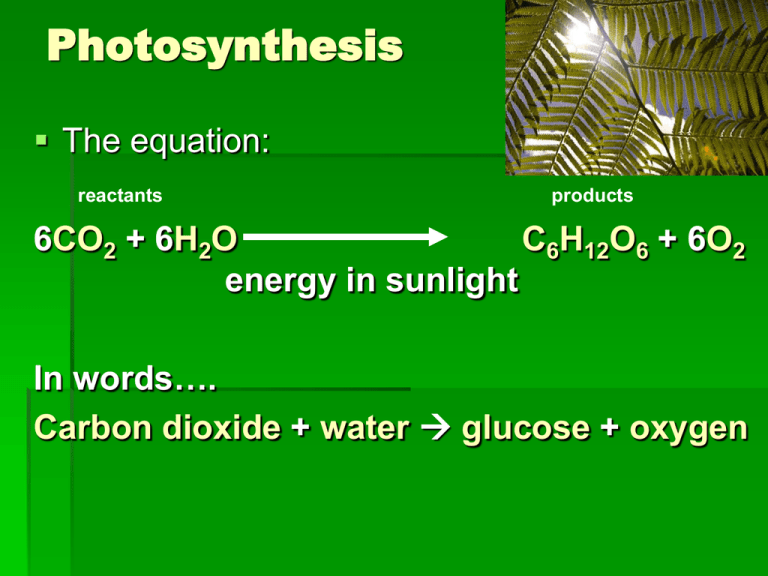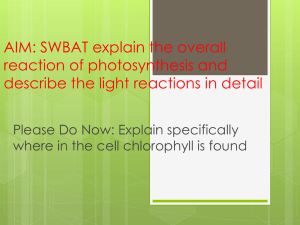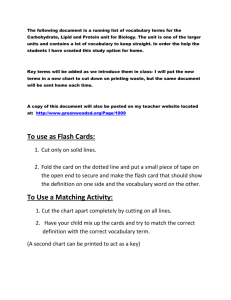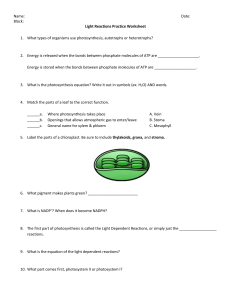Photosynthesis The equation:
advertisement

Photosynthesis The equation: reactants products 6CO2 + 6H2O C6H12O6 + 6O2 energy in sunlight In words…. Carbon dioxide + water glucose + oxygen PHOTOSYNTHESIS 1. Plant cells may have organelles called chloroplasts. 2. Photosynthesis occurs in a plant cell’s chloroplasts. 3. It Occurs in 3 stages a. Energy is captured from sunlight b. The sun’s energy is used to make ATP c. Glucose is made The majority of photosynthesis occurs in the leaves! Stage 1: Capturing the Sun’s Energy 4. Occurs in the Chloroplast in small disks called thylakoids which contain the pigment chlorophyll Stage 1: Capturing the Sun’s Energy 5. Chlorophyll traps energy from the sunlight Stage 2: Using the Sun’s Energy to Form ATP 6. After chlorophyll captures energy from the sun, the energy moves to the membrane of the thylakoid. 7. In the thylakoid membrane, the energy is used to make ATP molecules. Using the Sun’s Energy to Form ATP 8. ATP molecules are the only true energy source for living things. Sun’s energy ADP P (phosphate) ATP Stage 3: Making Carbohydrates (The Calvin Cycle) 9. ATP provides the activation energy to start the Calvin cycle (making carbohydrates) 10. Energy from ATP splits water molecules 11. Hydrogen binds with Carbon atoms from CO2 in the air to make simple sugars (glucose = C-H-O) 12.Oxygen is released into the atmosphere 13. The Calvin Cycle assembles glucose monomers into polymers for energy use and growth. 14. Plants can store the sun’s energy in this carbohydrate form. 15. When a plant needs energy (food) to carry out life activities, chemical reactions break down the carbohydrates for energy. * PLANTS UNDERGO BOTH PHOTOSYNTHESIS AND CELLULAR RESPIRATION! 16. As long as ATP is available, this step of photosynthesis can occur in sunlight or in the dark. Photosynthesis Purpose Converts sunlight into glucose (carbohydrate) for food Where Reaction occurs Chloroplasts (thylakoids) Present in… Plants (some bacteria & protists) Raw Materials Carbon dioxide & water Products Oxygen, glucose Formula 6CO2 + 6H2O energy in sunlight C6H12O6 +6O2 Weird Plants!!! Carnivorous plants such as the Venus fly trap and the pitcher plant still undergo photosynthesis! They must get nitrogen from eating insects. Venus Fly Trap Venus Fly Trap Pitcher plant







